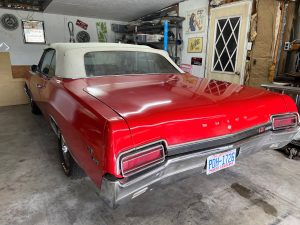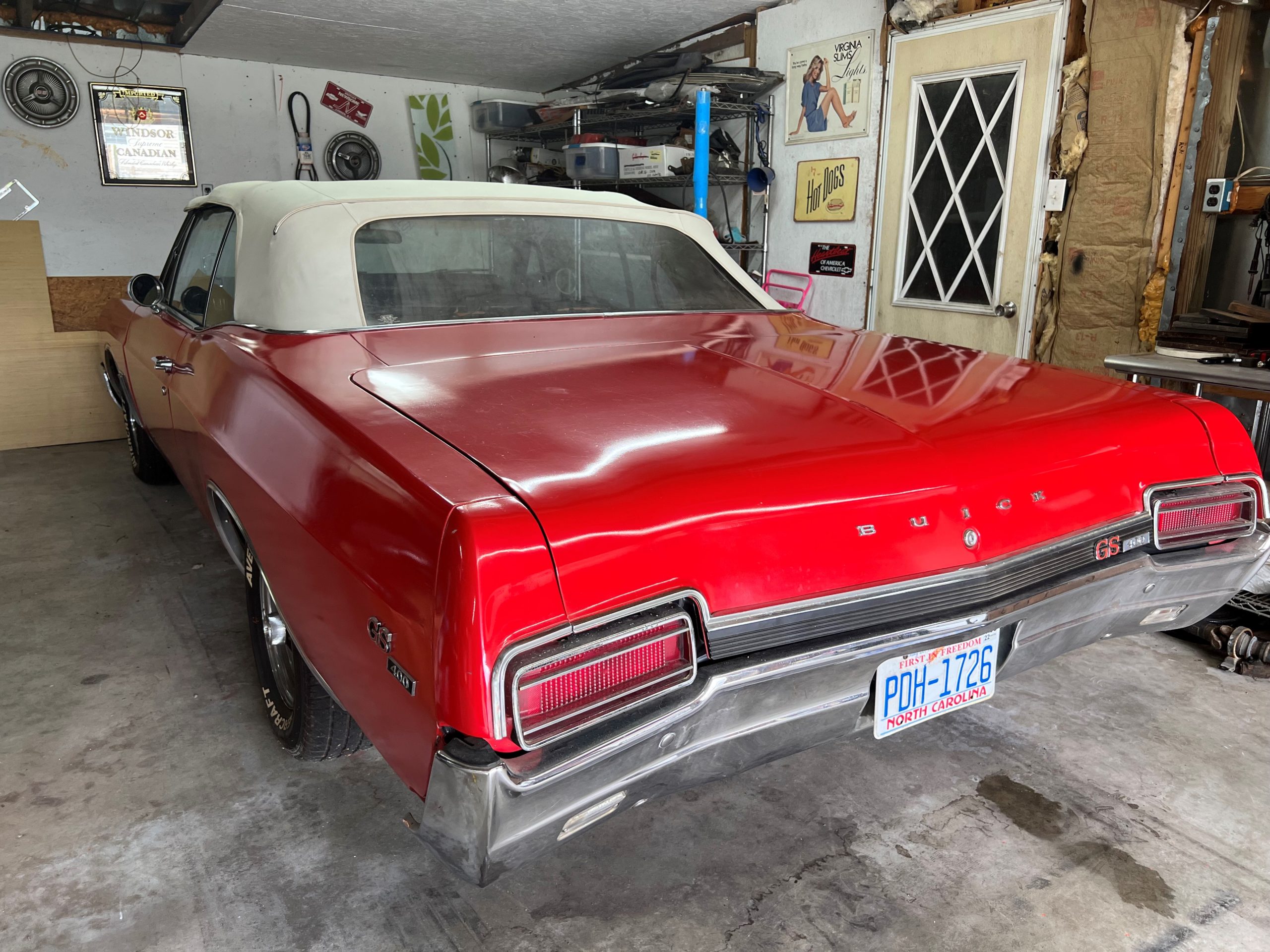The GTO, Chevelle SS 396 and 4-4-2 were garnering the lion’s share of the press at the time, but the ’67 Buick GS 400, having graduated to its own model line, had much to offer the muscle car buyer. New besides its name were revised front and rear styling, simulated hood scoops and fender VentiPorts, standard 340hp engine, aluminum front brake drums and a host of GM safety features from the energy-absorbing steering column to a dual-circuit brake master cylinder. Option debuts included four-piston 11-inch disc brakes and a Super Turbine 400 three-speed automatic transmission featuring a variable-pitch stator in its torque converter.

Replacing the 401- and 425-cubic-inch Nailhead powerplants was the new 400-cubic-inch V-8 in the GS 400 and 430-cubic-inch engine for the larger models. Though the bore centers were the same as the 401/425 at 4.75 inches, the 4.04-inch bore 400 block was actually a bit shorter because the accessories, including the distributor, water pump, oil pump and fuel pump, were all grouped to the front of the engine in their own bolt-on aluminum housing. The reciprocating assembly featured a 3.25-inch main nodular-iron 3.90-inch stroke crank, forged steel connecting rods and cast-aluminum pistons.
Completely redesigned cylinder heads received larger ports, 2.00/1.625-inch valves and a semi-wedge shaped combustion chamber in place of the Pent-roof chamber of the Nailhead. The compression ratio was 10.25:1. Advertised camshaft duration of 298/315-degrees and .421/.449-inch lift (with 1.60:1 shaft-mounted rockers) exploited the flow capabilities of the heads, and cast-iron exhaust manifolds featured large individual ports to ensure efficient evacuation of exhaust gases.
A Rochester Quadrajet carb, which was optional the previous year, became standard and featured small primary barrels for improved throttle response and low-speed economy and large secondary barrels for when power was desired. It flowed into a cast-iron dual-plane intake manifold and was topped off by a uniquely designed red dual-inlet air cleaner. Resulting power output was 340hp at 5,000 RPM and 440-lbs ft of torque at 3,200 RPM.
An 11-inch clutch was employed with the standard heavy-duty three-speed manual transmission and the optional M21 close-ratio four-speed.
Standard rear axle ratios were 3.36:1 for manual transmissions and 2.93:1 with the automatic. Additional ratios of 3.55:1, 3.90:1 and 4.30:1 were optional, as was Positive Traction. The differential also featured phosphate-coated gears and heavy-duty axle shafts.
Buick included the stiffer convertible frame on the GS 400 sport coupe (hardtop) and coupe (post). A .937-inch anti-roll bar was installed up front and the ride rates at the wheel for the springs were a fairly stiff 133-lbs./in. front and 116-lbs./in. rear. By comparison, the GTO’s were 89.5/110-lbs./in.
While the styling and specs alone reveal that the GS 400 was equal to or better than its division rivals in various areas, sales still trailed them. By the end of the model year, the tally was just 13,813 (10,659 sport coupes, 1,014 coupes and 2,140 convertibles) for the GS 400. The GS 340 added 3,692 cars and the California GS 1,577. This was in a model year when 81,722 GTOs, 63,006 Chevelle SS 396s and 24,833 4-4-2s were built. The ’67 GS 400 may not have sold in large volume, but it does possess all of the attributes of a true muscle car and the driving pleasure that they provide.
